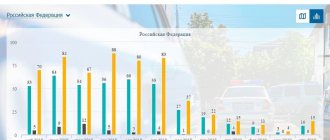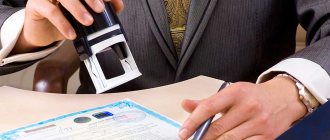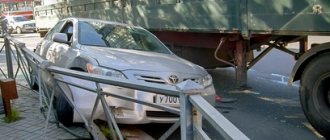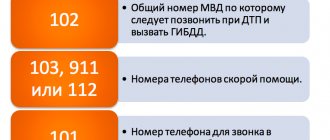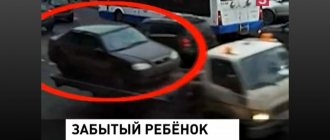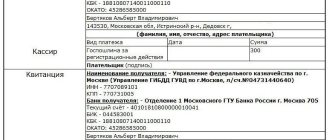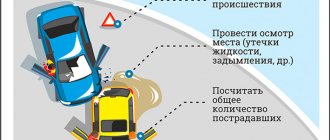○ What is hitting an obstacle?
One of the variants of an accident is a collision with a stationary object that the driver ran into or collided with. Most often, the objects of collision are:
- Bridge supports.
- Roadside pillars.
- Trees growing along the highway.
- Construction materials (sand, crushed stone, bricks, etc.).
- Fencing (for example, about carrying out repair work).
- Buildings and other structures located along the road.
- Doors of another vehicle left ajar.
In terms of the degree of danger, hitting an obstacle can be compared to a head-on collision between two cars, because in both cases injuries and even death are possible. The risk of death for a driver or passenger increases if they are not wearing a seat belt when they collide with an obstacle.
Rules for drawing up a protocol
Only if you have comprehensive insurance can you count on insurance payments if you hit an obstacle. Registration of an accident under such conditions must be competent. Typically, drivers prefer to address this issue to traffic inspectors.
The traffic police officer must create a report of the incident. This document must contain certain information, which includes:
- indicate the name of the road section where the accident occurred;
- the shape and size of the road is given;
- existing signs and markings are registered;
- the traffic lights or signs installed nearby are listed;
- a lot of attention is paid to various additional objects, which include buildings, trees or other elements on or near the road;
- provides data on weather conditions and visibility during the accident;
- indicates in which direction and at what speed the car was moving before the incident;
- the time and place of inspection of the driver and the car is indicated;
- items seized by the traffic inspector at the scene of the incident are listed;
- information about the actions performed by the traffic police officer is entered in order to correctly draw up an accident diagram.
Attached to this document are statements received from the direct driver, existing victims or witnesses. In this case, the motorist must be held administratively liable for hitting an obstacle. Traffic regulations clause 9.10 is considered the most common in such protocols, since such incidents often occur due to the incorrect location of the car on the roadway.
○ Design methods.
Registration of an accident, as in standard cases, can be carried out with the involvement of traffic police officers or without calling them.
✔ With traffic police officers.
The inspector called to the scene collects the following information:
- Driver information.
- Explanations of the participants in the accident.
- Testimony of witnesses.
- Type of accident.
- List of damage received.
Based on the information received, the inspector draws up a list of documents:
- A report of the inspection of the scene of the incident, which indicates information about the road section, characteristics of the roadway, the presence of pedestrian paths and road surfaces. The report also includes information about weather conditions at the time of the accident. The document states:
- Start and end time of the inspection.
- Distances and measurements that will be taken into account in further investigation.
- Actions to record the situation of an accident.
- Statements from participants in the incident.
- Certificate of road accident in the form of Order of the Ministry of Internal Affairs of Russia dated April 1, 2011 No. 154. It contains information about:
- The exact time and date of the incident.
- Participants in the incident.
- Injured.
- License plates of the vehicle.
- Damage to cars.
- Road accident diagram, which describes the circumstances of the accident and explanations of the participants. It states:
- Measuring the position of a vehicle that has hit an object.
- Impact objects.
- Length and direction of braking distance.
- Dimensions of nearby objects.
- Graphic diagram of the collision location with explanations.
- Factors limiting the review.
- Auxiliary guidelines.
- Dimensions of objects perpendicular and parallel to the road line.
- Characteristic points of the vehicle (wheel hubs and/or tow hooks).
- Protocol of inspection and technical condition of the machine - faults are noted, indicating the degree of deformation.
- Protocol for monitoring driver sobriety based on the results of a breathalyzer test.
✔ Without employees.
Registration of an accident without calling the police is possible only if the accident involved 2 vehicles, the drivers of which have no claims against each other and both have a valid MTPL policy. If only one person was involved in the accident, calling an inspector to register the incident is mandatory.
✔ How the Europrotocol is drawn up.
When registering an incident without calling the police, participants independently fill out an accident notification form, which is sent to the insurance company. It is necessary to reflect:
- Circumstances of the accident.
- Scheme of the incident.
- The nature of the damage and its extent.
Despite some advantages of completing the Europrotocol yourself (first of all, saving time), it is still advisable to spend several hours meeting with traffic police officers, because the latter will be able to more competently reflect all the circumstances of the case.
✔ Can I contact the insurance company?
You can and should contact the insurance company with a drawn up European Protocol or an accident notification issued by an inspector. The documents must be submitted to the insurance company no later than 5 days after the incident. But to maximize your chances of receiving compensation, it is advisable to notify the insurance company immediately on the day of the accident.
✔ Who is involved in assessing the damage.
The damage assessment is carried out by an expert from the insurance company that issued your policy. Such a study is necessary in order to calculate the cost of compensation that will be paid to the driver. The examination is carried out at the expense of the insurance company and will be free for the client.
Design rules
To receive insurance payment under a comprehensive insurance policy, the car owner will have to use the help of traffic inspectors. For this, it is important to correctly register a collision with an obstacle. The procedure can be performed not only by traffic police officers, but even independently if the driver knows well what actions he must perform.
Most often, citizens prefer to contact a traffic inspector for registration. Under such conditions, traffic police officers arrive at the scene of an accident. Hitting an obstacle is considered a fairly simple incident to report, but the traffic inspector must receive maximum information about it:
- clarifications are taken directly from the culprit of the accident in order to identify the cause of the collision;
- the information received is compared with the explanations of eyewitnesses, if any;
- the type of accident is determined;
- All damage caused to the vehicle is assessed.
Based on the information received, the traffic police officer creates an accident report. Additionally, a certificate of the incident and an accident diagram are drawn up. A report is made of the inspection and technical condition of the vehicle. A medical examination is carried out using a breathalyzer, which allows you to determine what condition the driver was in during the accident.
○ In what cases is it necessary to contact the “Emergency Motor Vehicle Commissioner”?
If any problems arise (for example, the insurance company assigns too little compensation), you can make an independent examination and demand compensation in the required amount. To do this, you can contact the emergency commissioner, who can be an individual or legal entity whose services drivers use in case of controversial insurance situations.
Avarcom works only for CASCO users; its services are not available for OSAGO holders. The cost of his services, as a rule, is already included in the policy, so calling him will not incur additional costs.
Bringing the offender to justice
If there are all the signs of an offense, the person driving the vehicle may be held accountable. Despite the fact that there is no specific article providing for punishment under the Code of Administrative Offenses, the violator may face a fine for general non-compliance with the Rules, which resulted in a collision.
For example, if the operation of a car was prohibited, then the violator will face one fine. If you don't use seat belts - another one. For drunk driving - the third, and so on.
In some cases, criminal liability may be provided for the offense. It occurs if the obstacle that the driver ran into poses a high public danger.
As a rule, in this case, the crime leads to victims: dead or injured. Hitting an obstacle that is in a stationary state may be a violation of the rules. The offender faces two years if the act was committed through negligence, but resulted in harm to health, for example, led to loss of vision, hearing, injury, etc.
If the incident ends in death, then imprisonment will last up to 5 years, and in the case of drunk driving - up to 7 years. If the Rules are violated, resulting in the death of two or more people, the violator will be punished with imprisonment for up to 7 years, and if he was drunk - up to 9 years.
In addition to this punishment, you will be prohibited from driving a car for up to 3 years if the crime was classified as hitting an obstacle.
The Code of Administrative Offenses does not have a separate regulatory act establishing liability for hitting a stationary vehicle or a stationary object, since the severity of the punishment depends on the accompanying circumstances: whether the driver’s seat belts were fastened, whether the speed was exceeded, whether traffic rules were followed, etc.
An administrative penalty is provided for hitting a standing obstacle, since the driver must maintain a distance in order to reduce speed in an unforeseen situation, avoid a collision or stop the car. The fine ranges from 1000 to 1500 rubles under Article 12.15 of the Code of Administrative Offenses of the Russian Federation.
A traffic accident does not necessarily mean a collision between two cars. Sometimes this may be a collision with an obstacle, which is also regarded as an accident and requires drawing up a report. In today’s article, we’ll look at the characteristics of such incidents and how the driver should act to resolve the situation as painlessly as possible.
One of the variants of an accident is a collision with a stationary object that the driver ran into or collided with. Most often, the objects of collision are:
- Bridge supports.
- Roadside pillars.
- Trees growing along the highway.
- Construction materials (sand, crushed stone, bricks, etc.).
- Fencing (for example, about carrying out repair work).
- Buildings and other structures located along the road.
- Doors of another vehicle left ajar.
In terms of the degree of danger, hitting an obstacle can be compared to a head-on collision between two cars, because in both cases injuries and even death are possible. The risk of death for a driver or passenger increases if they are not wearing a seat belt when they collide with an obstacle.
Registration of an accident, as in standard cases, can be carried out with the involvement of traffic police officers or without calling them.
The inspector called to the scene collects the following information:
- Driver information.
- Explanations of the participants in the accident.
- Testimony of witnesses.
- Type of accident.
- List of damage received.
Registration of an accident without calling the police is possible only if the accident involved 2 vehicles, the drivers of which have no claims against each other and both have a valid MTPL policy. If only one person was involved in the accident, calling an inspector to register the incident is mandatory.
When registering an incident without calling the police, participants independently fill out an accident notification form, which is sent to the insurance company. It is necessary to reflect:
- Circumstances of the accident.
- Scheme of the incident.
- The nature of the damage and its extent.
Despite some advantages of completing the Europrotocol yourself (first of all, saving time), it is still advisable to spend several hours meeting with traffic police officers, because the latter will be able to more competently reflect all the circumstances of the case.
We invite you to familiarize yourself with: Assignment agreement and its possibilities under the Civil Code of the Russian Federation
You can and should contact the insurance company with a drawn up European Protocol or an accident notification issued by an inspector. The documents must be submitted to the insurance company no later than 5 days after the incident. But to maximize your chances of receiving compensation, it is advisable to notify the insurance company immediately on the day of the accident.
The damage assessment is carried out by an expert from the insurance company that issued your policy. Such a study is necessary in order to calculate the cost of compensation that will be paid to the driver. The examination is carried out at the expense of the insurance company and will be free for the client.
If any problems arise (for example, the insurance company assigns too little compensation), you can make an independent examination and demand compensation in the required amount. To do this, you can contact the emergency commissioner, who can be an individual or legal entity whose services drivers use in case of controversial insurance situations.
Avarcom works only for CASCO users; its services are not available for OSAGO holders. The cost of his services, as a rule, is already included in the policy, so calling him will not incur additional costs.
The Code of Administrative Offenses does not have a separate article regulating the punishment for hitting an obstacle. Such an offense is classified as failure to comply with traffic rules resulting from a collision. The punishment depends on the reasons that led to the collision.
The use by a driver while a vehicle is moving of a telephone that is not equipped with a technical device that allows hands-free negotiations shall entail the imposition of an administrative fine in the amount of one thousand five hundred rubles. (Article 12.36.1 of the Code of Administrative Offenses of the Russian Federation).
Here you need to take into account that the driver will be held accountable if the obstacle that was hit was installed in accordance with all the rules of the law. If there are violations, the owner of the item will be punished.
Failure to comply with requirements for ensuring road safety during the construction, reconstruction, repair and maintenance of roads, railway crossings or other road structures, or failure to take measures to timely eliminate obstacles to traffic, to temporarily restrict or stop the movement of vehicles on certain sections of roads in cases if the use of such areas threatens road safety, entails the imposition of an administrative fine on officials responsible for the condition of roads, railway crossings or other road structures in the amount of twenty thousand to thirty thousand rubles; for legal entities - from two hundred thousand to three hundred thousand rubles. (Clause 1 of Article 12.4 of the Code of Administrative Offenses of the Russian Federation).
If harm to health is caused to a mild or moderate degree, the fine increases to 50-100 thousand rubles for individuals and 400-500 thousand for legal entities.
The guilt of the road services is determined by the traffic police officer, it is recorded in all protocols. Prosecution is carried out through the court.
For example, if construction materials are located in a travel area and are not protected by warning signs, their owner is responsible for the accident. The severity of the punishment depends on the severity of the accident.
Colliding with a stationary object is usually an insured event under CASCO. Therefore, you can count on compensation in the event of a collision. Most companies provide the possibility of paying compensation for minor damage. But many of them find completely legal ways to avoid transferring funds.
For example, you call your insurance company after an accident and describe the situation. At the other end of the line they assure you that your case is on the insurance list and offer to come for registration. You, happy that you don’t need to collect a bunch of papers, go to the company, write a statement, to which you are told that they will not pay you anything.
Thus, hitting a stationary object is a type of accident, which has its own characteristics and nuances. Knowing them will help you get compensation after an accident and get out of the situation with minimal losses.
There are different ways to hold a driver accountable for a hit-and-run. The law provides for three types of liability.
Criminal penalty
Of course, only an offense with a high public danger can be a reason for criminal prosecution. This also applies to drivers who hit an obstacle.
In order for there to be grounds for prosecution under an article of the Criminal Code, such an act must result in serious bodily injury or death of a person. As for the actual punishment for hitting, its degree is determined by Art. 264 and 266 of the Criminal Code of the Russian Federation.
As noted above, collisions most often occur due to traffic violations. And if such a violation was committed through negligence (but resulted in serious harm to health), the culprit can “get off” with 2 years of imprisonment by a court decision.
If the victim dies as a result of the collision, the offender can go to prison for up to 5 years. And if the driver is found to be under the influence of alcohol or drugs - up to 7 years. If 2 or more people die after a collision, the offender may be sentenced to imprisonment for up to 7 years. And in case of aggravating circumstances (we are talking again about alcohol or drugs in the blood) - up to 9 years.
○ Administrative liability for hitting an obstacle?
The Code of Administrative Offenses does not have a separate article regulating the punishment for hitting an obstacle. Such an offense is classified as failure to comply with traffic rules resulting from a collision. The punishment depends on the reasons that led to the collision. For example, a fine of 1,000 rubles is imposed for the absence of seat belts, and a fine of 500 rubles for using a vehicle in violation of operating rules.
The use by a driver while a vehicle is moving of a telephone that is not equipped with a technical device that allows hands-free negotiations shall entail the imposition of an administrative fine in the amount of one thousand five hundred rubles. (Article 12.36.1 of the Code of Administrative Offenses of the Russian Federation).
Here you need to take into account that the driver will be held accountable if the obstacle that was hit was installed in accordance with all the rules of the law. If there are violations, the owner of the item will be punished.
Causes of incidents
According to traffic rules, hitting an obstacle is a collision of a car with a stationary object. There are many reasons why such an accident occurs. Most often this incident is caused by the following factors:
- the driver violates the speed limit established on a specific section of the road;
- citizens in the car do not want to wear seat belts;
- use for moving a car with any malfunctions in significant control elements;
- the driver becomes overtired or loses consciousness due to poor health;
- while driving, the car owner does not pay attention to warning signs or markings;
- severe weather conditions or other problems preventing free and easy movement on the road;
- talking on the phone while driving without using special devices that allow you to communicate with other people without using your hands.
Most often, such accidents occur on turns, since the driver, due to inexperience or inattention, simply does not fit into the turn. Often, hitting a stationary obstacle ends in disaster for drivers and passengers.
○ Road accidents caused by road services, who is to blame and where to complain?
Failure to comply with requirements for ensuring road safety during the construction, reconstruction, repair and maintenance of roads, railway crossings or other road structures, or failure to take measures to timely eliminate obstacles to traffic, to temporarily restrict or stop the movement of vehicles on certain sections of roads in cases if the use of such areas threatens road safety, entails the imposition of an administrative fine on officials responsible for the condition of roads, railway crossings or other road structures in the amount of twenty thousand to thirty thousand rubles; for legal entities - from two hundred thousand to three hundred thousand rubles. (Clause 1 of Article 12.4 of the Code of Administrative Offenses of the Russian Federation).
If harm to health is caused to a mild or moderate degree, the fine increases to 50-100 thousand rubles for individuals and 400-500 thousand for legal entities.
The guilt of the road services is determined by the traffic police officer, it is recorded in all protocols. Prosecution is carried out through the court.
For example, if construction materials are located in a travel area and are not protected by warning signs, their owner is responsible for the accident. The severity of the punishment depends on the severity of the accident.
What does a minor event mean?
Practice also knows cases when, even when hitting a stationary object, a person is not held accountable, since the offense is of minor significance. The criteria for insignificance are determined by the Supreme Court of the Russian Federation by Resolution No. 5 of 2005.
Acts that formally presuppose the establishment of elements of an offense, but due to the nature of the public danger, do not pose a threat and do not harm any social relations, are recognized as minor. Consequently, insignificance is determined by the nature of the act, regardless of whether it is an action or an inaction, which is formally recognized as a violation of the law.
Determination of fault in an accident.
○ CASCO and hitting an obstacle.
Colliding with a stationary object is usually an insured event under CASCO. Therefore, you can count on compensation in the event of a collision. Most companies provide the possibility of paying compensation for minor damage. But many of them find completely legal ways to avoid transferring funds.
For example, you call your insurance company after an accident and describe the situation. At the other end of the line they assure you that your case is on the insurance list and offer to come for registration. You, happy that you don’t need to collect a bunch of papers, go to the company, write a statement, to which you are told that they will not pay you anything. This is explained by the fact that you left the scene of the accident without waiting for the insurance employee, thereby canceling the possibility of obtaining insurance.
Thus, hitting a stationary object is a type of accident, which has its own characteristics and nuances. Knowing them will help you get compensation after an accident and get out of the situation with minimal losses.
The nuances of receiving insurance payments
For hitting an obstacle, you can only count on compensation from the insurance company if you have a comprehensive insurance policy. Payments are awarded only on the condition that the driver has complied with certain requirements set by insurance companies. This includes the procedure for registering an accident and the time frame within which a citizen applies to the insurance organization.
Compensation will be denied if the following conditions are met:
- the driver sent knowingly false information about the accident to the company, and the company not only cancels the insurance, but can also sue the client, and the citizen is also blacklisted;
- transferring fake documents to the organization, and under such conditions the driver may even be subject to criminal liability.
Not only the car owner, but also people injured as a result of this accident can count on payments. Companies independently conduct a competent examination of the car to ensure that there is no fraud on the part of car owners.
Compensation is awarded even for minor damage. To do this, it is important for the car owner to submit to the insurance company the necessary documents drawn up by the car inspector.
The car owner may be denied insurance benefits if he was intoxicated or using drugs at the time of the accident. If there is evidence that a person intentionally drove into an obstacle, then he will also not receive funds from the insurance company.
Detour is an obstacle
Who is in charge here at the crossroads?
Test your knowledge of traffic rules. Avoiding obstacles is only allowed from the side indicated by the arrow.
The obstacle avoidance direction requires avoiding the obstacle only from the side indicated by the arrow.
| The tractor stops immediately. |
When going around an obstacle, vehicles moving on the free side have the right to move first. So, the tractor driver (Fig. 117, b) must let the bus moving on the free side pass, and only after that continue moving.
The obstacle avoidance direction requires avoiding the obstacle only from the side indicated by the arrow.
Before overtaking or going around an obstacle, the driver gives a signal with a left turn indicator, and when overtaking (bypassing) leaving the occupied lane on the right - with a right turn indicator.
| The tractor stops immediately. |
Special cases of movement: I - oncoming movement on a slope; 6 - oncoming traffic when going around an obstacle.
| Route diagram for road trains. |
For the same turning radius of a road train, semi-trailers have a greater displacement than two-axle trailers, which should also be taken into account when passing, making sharp turns and avoiding obstacles.
| Schemes of cars with swivel wheels. |
Vehicles with all steerable wheels (Fig. 22, b) have significantly greater maneuverability, since their turning radius is reduced by 2 times. In addition, when the wheels are turned parallel, lateral (oblique) movement of the machine is possible, which is convenient when avoiding obstacles.
The commander of a reconnaissance group (flight) prepares scouts to perform assigned tasks, paying special attention to their precise knowledge of their duties. The commander studies with the personnel the route of advance to his facility (the presence of bridges, tunnels, crossings, possible ways to bypass and bypass obstacles), checks whether the personnel know the features of the facility, the location of shelters and shelters, utility distribution centers, and storage facilities on its territory and warehouses
In addition, the commander teaches reconnaissance officers how to properly use radiation and chemical reconnaissance instruments, personal protective equipment, conducts classes on marking the boundaries of contaminated areas, providing first aid to victims, introduces safety measures when operating in contaminated areas and at an object in the affected area, conducting partial and complete sanitization.
When mowing bread, single or double rollers are formed so that the grain mass in the rolls is laid at an angle of 10 - 30 to the direction of movement of the unit. The windrows should be the same in width and thickness, arranged in parallel rows so that the ears do not come into contact with the soil surface. When turning and when going around obstacles, the windrows are placed at least 1-5 m apart from each other. The quality of windrow placement is assessed visually.
| Reproduction of electrocardiograms by an electronic model. monophasic curves of the right and left atria (a and the right and left ventricles (o.v, d, 0 - electrocardiograms B in three standard leads. (According to Akulinich, Babsky, etc. | General view of the device for electronic modeling of electrocardiograms. |
Responsibilities of pedestrians
Administrator January 6:
4.1. Pedestrians must move on sidewalks, pedestrian paths, bicycle and pedestrian paths, and, if there are none, along the roadsides. Pedestrians carrying or carrying bulky objects, as well as persons using non-motorized wheelchairs, may walk along the edge of the roadway if their movement on sidewalks or shoulders creates an obstacle for other pedestrians.
If there are no sidewalks, pedestrian paths, bicycle paths or shoulders, and also if it is impossible to move along them, pedestrians can move along a bicycle path or walk in one row along the edge of the roadway (on roads with a dividing strip - along the outer edge of the roadway).
When walking along the edge of the roadway, pedestrians must walk towards the movement of vehicles. Persons moving in wheelchairs without a motor, driving a motorcycle, moped, or bicycle, in these cases must follow the direction of travel of the vehicles.
When driving along the side of the road or the edge of the roadway in the dark or in conditions of insufficient visibility, pedestrians are recommended to carry objects with reflective elements and ensure that these objects are visible to vehicle drivers.
4.2. The movement of organized pedestrian columns along the roadway is permitted only in the direction of movement of vehicles on the right side of no more than four people in a row. In front and behind the column on the left side there should be escorts with red flags, and in the dark and in conditions of poor visibility - with lights on: in front - white, in back - red.
Groups of children are allowed to drive only on sidewalks and pedestrian paths, and in their absence, along the roadsides, but only during daylight hours and only when accompanied by adults.
4.3. Pedestrians must cross the roadway at pedestrian crossings, including underground and overground ones, and in their absence, at intersections along sidewalks or curbs.
If there is no crossing or intersection in the visibility zone, it is allowed to cross the road at right angles to the edge of the roadway in areas without a dividing strip and fences where it is clearly visible in both directions.
4.4. In places where traffic is regulated, pedestrians must be guided by the signals of a traffic controller or a pedestrian traffic light, and in its absence, a transport traffic light.
4.5. At unregulated pedestrian crossings, pedestrians can enter the roadway after assessing the distance to approaching vehicles, their speed and making sure that the crossing will be safe for them. When crossing a roadway outside a pedestrian crossing, pedestrians must, in addition, not interfere with the movement of vehicles and exit from behind a standing vehicle or other obstacle that limits visibility without making sure that there are no approaching vehicles.
4.6. Once on the roadway, pedestrians should not linger or stop unless this is related to ensuring traffic safety. Pedestrians who do not have time to complete the crossing must stop on the line dividing traffic flows in opposite directions. You can continue crossing only after making sure that further movement is safe and taking into account the traffic light signal (traffic controller).
4.7. When approaching vehicles with a blue flashing light (blue and red) and a special sound signal on, pedestrians are required to refrain from crossing the roadway, and pedestrians on it must immediately vacate the roadway.
4.8. Waiting for a route vehicle and a taxi is allowed only on landing platforms raised above the roadway, and if there are none, on the sidewalk or side of the road. In stopping places for route vehicles that are not equipped with raised landing platforms, it is allowed to enter the roadway to board the vehicle only after it has stopped. After disembarking, it is necessary to clear the roadway without delay.
When moving across the roadway to or from the stopping point of a route vehicle, pedestrians must be guided by the requirements of paragraphs 4.4 - 4.7 of the Rules.
Appendix 1. Road signs:1. Warning signs2. Priority signs3. Prohibition signs4. Mandatory signs5. Signs of special regulations6. Information signs7. Service marks8. Additional information signs (plates)
Appendix 2. Road markings and their characteristics: 1. Horizontal marking2. Vertical marking
